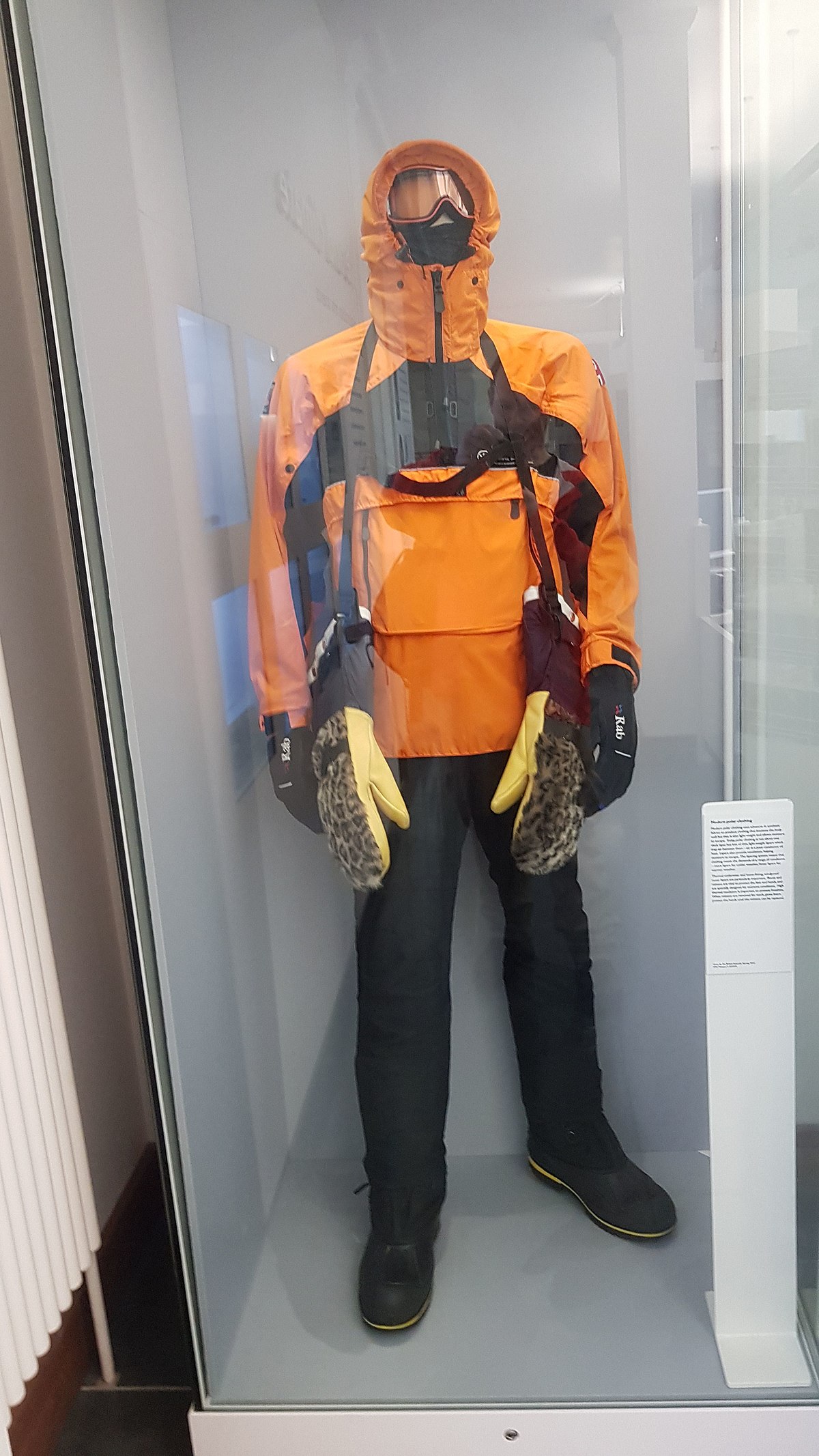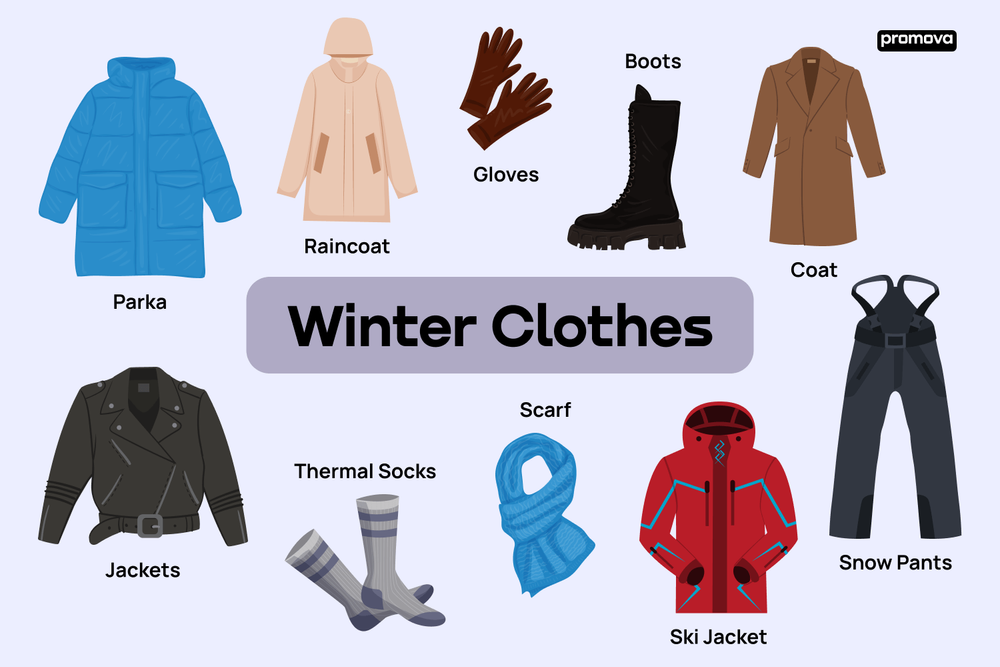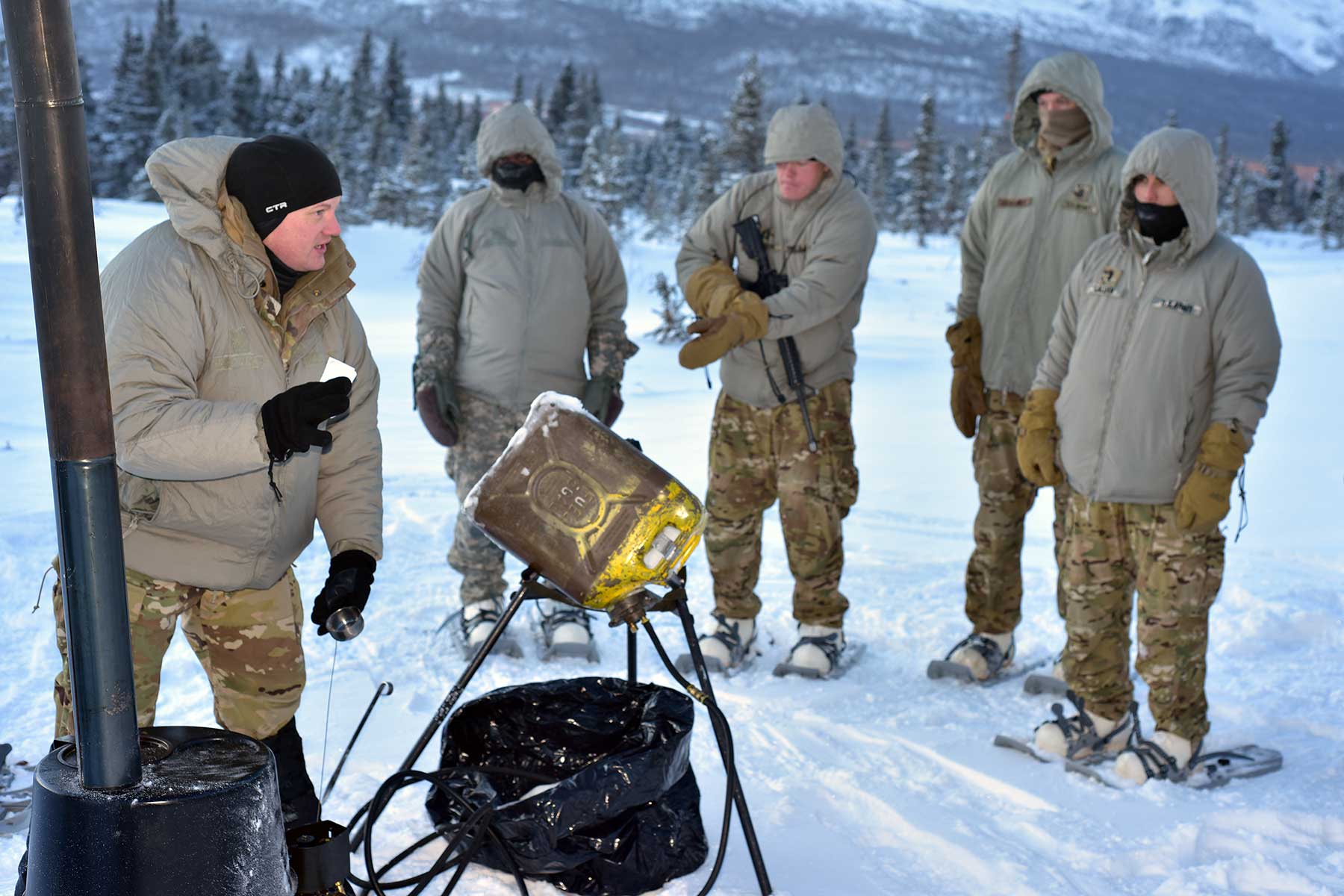
Cold Weather Clothing: Wear layers, insulated jackets, thermal socks, gloves, and hats for warmth in cold weather. Cold-weather clothing is essential to protect against low temperatures and harsh conditions.
From cozy sweaters to waterproof boots, having the right gear can make all the difference in staying comfortable and safe during the winter. Choosing materials like wool or synthetic fibers that wick away moisture and retain heat is essential.
Accessories like scarves and earmuffs can also provide extra protection from the cold. Investing in quality cold-weather clothing allows you to enjoy outdoor activities, even on the chilliest days.
Layering For Warmth
When it comes to cold-weather clothing, layering is essential. Layering for warmth involves wearing multiple layers of clothing, each with its purpose. The three main layers are the base, mid, and outer layers. Proper layering can keep you warm and comfortable in even the coldest temperatures.
Choosing The Right Base Layers
Base layers are the foundation of your cold-weather outfit. They should be snug and fit close to your skin to trap heat. Look for moisture-wicking and breathable materials to keep you dry and comfortable. Wool, silk, and synthetic materials like polyester and spandex are good base-layer choices. Avoid cotton, as it tends to retain moisture and can make you feel damp and cold.
- Choose snug, form-fitting base layers.
- Look for moisture-wicking, breathable materials.
- Consider wool, silk, or synthetic materials like polyester and spandex
- Avoid cotton
Insulating With Layers
Mid-layers provide insulation and help trap heat. Look for materials that are lightweight, breathable, and insulating. Fleece, down, and synthetic materials like Thinsulate are good mid-layer choices. Layering multiple mid-layers can also provide added warmth. However, be mindful not to wear too many layers, which can cause you to overheat and sweat.
- Choose lightweight, breathable, and insulating mid-middle layers
- Fleece, down, and synthetic materials like Thinsulate are good choices
- Layer multiple mid-layers for added warmth, but be mindful not to wear too many layers
Protecting With Outer Layers
Outer layers are the final layer of protection against the elements. They should be windproof, waterproof, and breathable. Look for materials like Gore-Tex or other waterproof and breathable fabrics. Jackets with hoods, adjustable cuffs, and hems can also help keep out wind and cold air.
- Choose windproof, waterproof, and breathable outer layers
- Look for materials like Gore-Tex or other waterproof and breathable fabrics
- Choose jackets with hoods and adjustable cuffs and hems for added protection
Remember to choose breathable, moisture-wicking, and insulating materials when layering for warmth. Avoid wearing too many layers, which can cause you to overheat and sweat. With the proper layers, you can stay warm and comfortable in even the coldest temperatures.

Credit: en.wikipedia.org
Critical Considerations For Winter Accessories
Choosing the right winter accessories is essential for staying warm and comfortable in cold weather. Critical considerations for winter accessories include selecting the right hat, keeping hands warm with gloves or mittens, choosing the best scarf or neck gaiter, and understanding the importance of quality socks.
Selecting The Right Hat
When choosing a hat for cold weather, select styles that cover your ears and are made from warm, insulating materials such as wool or fleece, look for hats with a snug fit to prevent heat from escaping, and consider options with a lining for added warmth.
Keeping Hands Warm With Gloves Or Mittens
Gloves or mittens are crucial for protecting your hands from the cold. Look for insulated options that are waterproof and windproof to keep hands dry and warm. Mittens are often warmer than gloves, allowing fingers to share heat, while gloves provide better dexterity.
Choosing The Best Scarf Or Neck Gaiter
A scarf or neck gaiter can provide extra warmth and protection for the neck and face. Opt for a scarf made from wool or fleece for superior insulation. Neck gaiters are versatile and can be pulled up to cover the face when needed.
Importance Of Quality Socks
Quality socks are essential for keeping feet warm and dry in cold weather. Look for socks made from moisture-wicking materials such as merino wool to keep feet dry and insulated. Consider wearing thermal or fleece-lined socks for extra warmth.
Footwear For Cold Weather
Cold weather brings its own set of challenges, especially when it comes to selecting the right footwear. Proper footwear is essential for staying warm, comfortable, and safe in cold, snowy, and icy conditions. This section will discuss the critical considerations for insulated boots and the factors to consider for snow and ice traction.
Selecting Insulated Boots
When choosing insulated boots for cold weather, it’s crucial to consider the level of insulation. Look for boots with Thinsulate or other high-quality insulation to ensure warmth without adding excessive bulk. Additionally, waterproof materials are essential to keep your feet dry and warm in snowy conditions. Insulated boots with adjustable closures can provide a snug fit to prevent cold air from entering.
Considerations For Snow And Ice Traction
Snow and ice traction is a vital aspect to consider when selecting cold-weather footwear. Look for boots with deep treads and a solid grip to stabilize and prevent slipping on icy surfaces. Consider boots with built-in crampons or spikes for additional traction in extreme conditions. Rubber soles with a firm grip can also enhance traction on snowy and icy surfaces.

Credit: promova.com
Understanding Outerwear Materials
Staying warm and comfortable while still looking stylish is essential when the temperature drops. Understanding outerwear materials is crucial in making the right choice for your winter wardrobe. Here, we will explore the materials commonly used in cold-weather clothing.
Exploring Insulation Options
Insulation is the key to staying warm in cold weather. There are several types of insulation commonly used in outerwear:
- Down: Made from the soft, fluffy feathers found on the underside of geese and ducks, down is an excellent insulator that provides warmth without adding weight or bulk. However, it can lose its insulating properties when wet.
- Synthetic: Made from polyester fibers, synthetic insulation is lightweight and retains its insulating properties even when wet.
- Wool: A natural insulator, wool is warm and breathable. It’s also water-resistant, making it a good choice for wet weather.
Comparing Waterproof And Water-resistant Materials
Understanding the difference between waterproof and water-resistant materials is essential when staying dry in wet weather.
| Waterproof | Water-Resistant |
|---|---|
| Completely blocks water from getting through | It resists water to a certain degree but will eventually let it through |
| Often made from Gore-Tex or other breathable, waterproof materials | It can be made from a variety of materials, including waxed canvas, nylon, and polyester |
| Suitable for heavy rain or extended exposure to water | Ideal for light rain or short exposure to water |
When choosing a waterproof or water-resistant outerwear material, consider how you’ll use it. Opt for a waterproof material like Gore-Tex if you’ll be outside for extended periods in heavy rain. If you’ll be outside for short periods in light rain, a water-resistant material like waxed canvas may suffice.
Specialized Winter Activities
SpecializedSpecialized
When engaging in winter activities, having the right gear is essential to staying warm, dry, and safe. Specialized activities such as skiing, snowboarding, hiking, and outdoor adventures can significantly improve comfort and performance.
Essential Gear For Skiing And Snowboarding
Skiing and snowboarding require specific gear to ensure both warmth and safety. Essential gear for these activities includes:
- Insulated waterproof jackets and pants protect against the cold and snow.
- Moisture-wicking base layers to keep the body dry and warm.
- Thermal socks and gloves for added insulation and protection.
- Helmets and goggles for safety and visibility.
- Snow boots with good traction for walking in the snow.
Cold Weather Gear For Hiking And Outdoor Adventures
Having the right gear to stay warm and comfortable for hiking and outdoor adventures in cold weather is crucial. Some essential gear for these activities includes:
- Insulated and waterproof outerwear is needed to protect against the elements.
- Layered clothing helps regulate body temperature and moisture.
- Sturdy, insulated hiking boots for traction and warmth.
- Wool or moisture-wicking socks to keep feet dry and warm.
- Backpack with extra layers, snacks, and water for longer excursions.
Maintaining Comfort Indoors
Staying Cosy With Indoor Clothing
Opt for layers like sweaters, thermal tops, and cozy pajamas indoors during cold weather.
Choosing The Right Indoor Footwear
Ensure your indoor footwear, such as slippers or fuzzy socks, is warm and comfortable.
AccessorAccessorizingnter Fashion
Accessorizing fashion is vital for staying stylish in cold weather. Incorporating fashionable scarves and hats and choosing stylish outerwear can help you stay warm while looking fabulous. Let’s explore some tips for accessorizing fashion to keep you both cozy and chic.
Incorporating Fashionable Scarves And Hats
When choosing a scarf, choose soft, luxurious materials such as cashmere or wool to keep you warm and add a touch of elegance to your outfit. Invest in versatile colors like black, grey, or navy that can easily complement a variety of outerwear. Experiment with different scarf-tying techniques to add a unique twist to your look.
Beanies are a trendy and practical choice for cold weather. Look for styles with pom-poms or embellishments to add a fun flair to your ensemble. Consider a felt fedora or a stylish beret for a more polished look. Choose hats that fit snugly to keep your head warm and complete your winter look.
Choosing Stylish Outerwear
Invest in a high-quality coat that will last for multiple seasons. Look for classic silhouettes like trench coats or pea coats that never go out of style. Consider bold colors or timeless neutrals to make a statement or seamlessly blend in with your existing wardrobe. Opt for water-resistant materials to keep you dry in snowy or rainy conditions.
Combat boots and knee-high styles are both fashionable and functional for winter. Look for insulated linings and gripped soles to warm your feet and provide traction on slippery surfaces. Consider neutral tones like black or brown to coordinate with various outfits.
Budget-friendly Cold Weather Clothing Options
You don’t have to break the bank to stay warm in cold weather.
Here are some budget-friendly options for your winter wardrobe:
Finding Affordable Winter Wardrobe Essentials
Start by focusing on versatile pieces that can be mixed and matched.
- Look for basic sweaters and thermal leggings that can be layered.
- Winter accessories like scarves and gloves can add warmth without the high cost.
- Choose neutral colors that can be worn with multiple outfits.
Tips For Shopping Winter Sales
Take advantage of end-of-season sales to score great deals on cold-weather clothing.
- Shop off-season for discounted prices on winter items.
- Sign up for newsletters to receive exclusive discounts and promotions.
- Compare prices online and in-store to find the best deals.

Credit: www.military.com
Frequently Asked Questions
What Is The Best Clothing For Cold Weather?
The best clothing for cold weather includes insulated jackets, thermal leggings, warm hats, gloves, and waterproof boots.
What Type Of Clothes Will You Wear When It Is Very Cold?
Wear layers, including thermal underwear, a sweater, and a heavy coat. Also, don’t forget a hat, gloves, and insulated boots.
How Should I Dress For Cold Weather?
Wear layers, including a thermal base, an insulating middle, and a waterproof outer layer, to dress for cold weather. Don’t forget a hat, gloves, and insulated boots for added warmth. Opt for moisture-wicking fabrics and avoid cotton to stay dry and cozy in chilly conditions.
What To Wear For 0 Degree Weather?
Dress in layers, including thermal undergarments, a warm sweater, and a waterproof coat. Wear insulated, waterproof boots and thick socks. Don’t forget a hat, gloves, and a scarf to protect your head, hands, and neck. Dressing for 0-degree weather is all about staying warm and dry.
Conclusion
Choosing the proper cold-weather clothing is crucial for staying warm and stylish. Many options suit your style and needs, from cozy sweaters to insulated jackets. Remember to layer up and invest in quality pieces to brave the chill confidently.
Stay cozy and fashionable!

Assalamu Alaikum.. I am Mohammad Rakib I have been working in fashion for a long time I am in US and UK and I write about this topic in many places. I have been working and working on this topic for a long time
And I am a blogger I have been blogging about fashion for a long time in different places.

